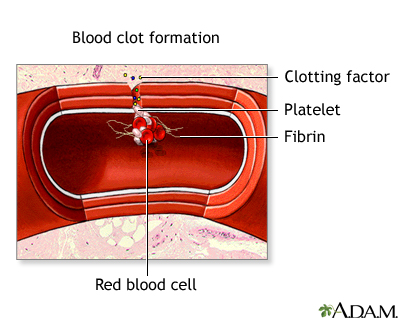Which of the following tube additives promotes clot formation?
Heparin
Oxalate
Citrate
Silica
The Correct Answer is D
Choice A reason:
Heparin is an anticoagulant, not a clot activator. It works by inhibiting thrombin and preventing the conversion of fibrinogen to fibrin, thus preventing clot formation. It is commonly found in green-top tubes and is suitable for collecting plasma samples for tests like electrolyte levels and coagulation studies.
Choice B reason:
Oxalate is also an anticoagulant that prevents clotting by precipitating calcium. It is not used to promote clot formation but rather to maintain a blood sample in a non-coagulated state for various tests.
Choice C reason:
Citrate functions similarly to heparin and oxalate as an anticoagulant. It chelates calcium ions in the blood, inhibiting the coagulation process. Citrate is often used in blue-top tubes and is ideal for collecting plasma samples for coagulation studies.
Choice D reason:
Silica is a clot activator. It is commonly used in serum separator tubes (SSTs) with a gold or red speckled top. The silica particles provide a surface for the rapid formation of the clot, allowing for the separation of serum from the blood cells. This is essential when serum is needed for testing.

Nursing Test Bank
Naxlex Comprehensive Predictor Exams
Related Questions
Correct Answer is C
Explanation
Choice A Reason:
Patient's insurance information is not typically included in the follow-up documentation of a stat result. Insurance information is relevant for billing purposes and does not pertain to the immediate clinical care or the communication of test results.
Choice B Reason:
The room number of the patient might be included in the internal documentation for logistical purposes but is not the primary piece of information required following a verbal report of a stat result. The focus should be on the communication details rather than the location.
Choice C Reason:
The name of the provider contacted is essential information in the follow-up documentation after a verbal report. This ensures that there is a record of who received the information, which is crucial for accountability and continuity of care.
Choice D Reason:
The provider's phone number is not necessary in the follow-up documentation if the name of the provider is already included. The phone number would have been used to make the initial contact, and the key information is the confirmation that the provider was reached and informed of the stat result.
Correct Answer is A
Explanation
Choice A Reason:
Contacting the physician by paging or calling right away is the most appropriate action when critical values are confirmed on a laboratory test. Critical values are defined as those that indicate the patient is in danger of death unless treatment is initiated immediately. Immediate notification of the responsible licensed caregiver is required so that appropriate clinical action can be taken for the patient. This is a standard procedure compliant with CLIA regulation 493.1109(f) and is essential for patient safety.
Choice B Reason:
Leaving a message at the physician's office number is not an adequate response to confirmed critical values. Messages can be overlooked or not checked until the next business day, which could delay necessary urgent medical interventions.
Choice C Reason:
Calling the physician's office on the next business day is not acceptable when dealing with critical values. The urgency of critical results requires immediate action, and waiting until the next business day could result in significant harm or death to the patient.
Choice D Reason:
Faxing the results to the physician's office with a stat fax cover is not sufficient for immediate communication of critical values. While the fax may indicate urgency, there is no guarantee that the fax will be seen immediately by the physician or their staff. Direct communication through paging or calling ensures that the critical information is relayed without delay.
Whether you are a student looking to ace your exams or a practicing nurse seeking to enhance your expertise , our nursing education contents will empower you with the confidence and competence to make a difference in the lives of patients and become a respected leader in the healthcare field.
Visit Naxlex, invest in your future and unlock endless possibilities with our unparalleled nursing education contents today
Report Wrong Answer on the Current Question
Do you disagree with the answer? If yes, what is your expected answer? Explain.
Kindly be descriptive with the issue you are facing.
